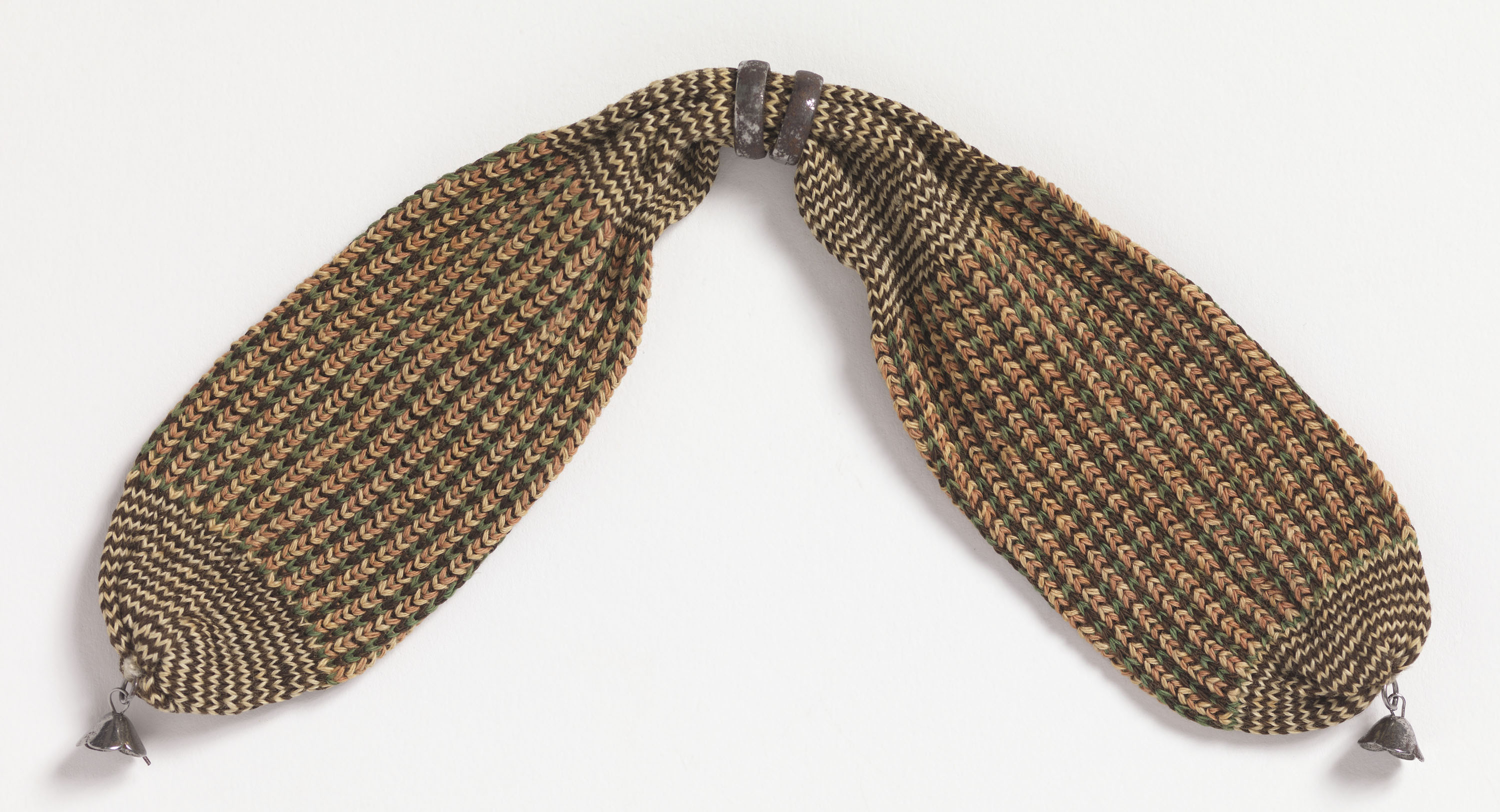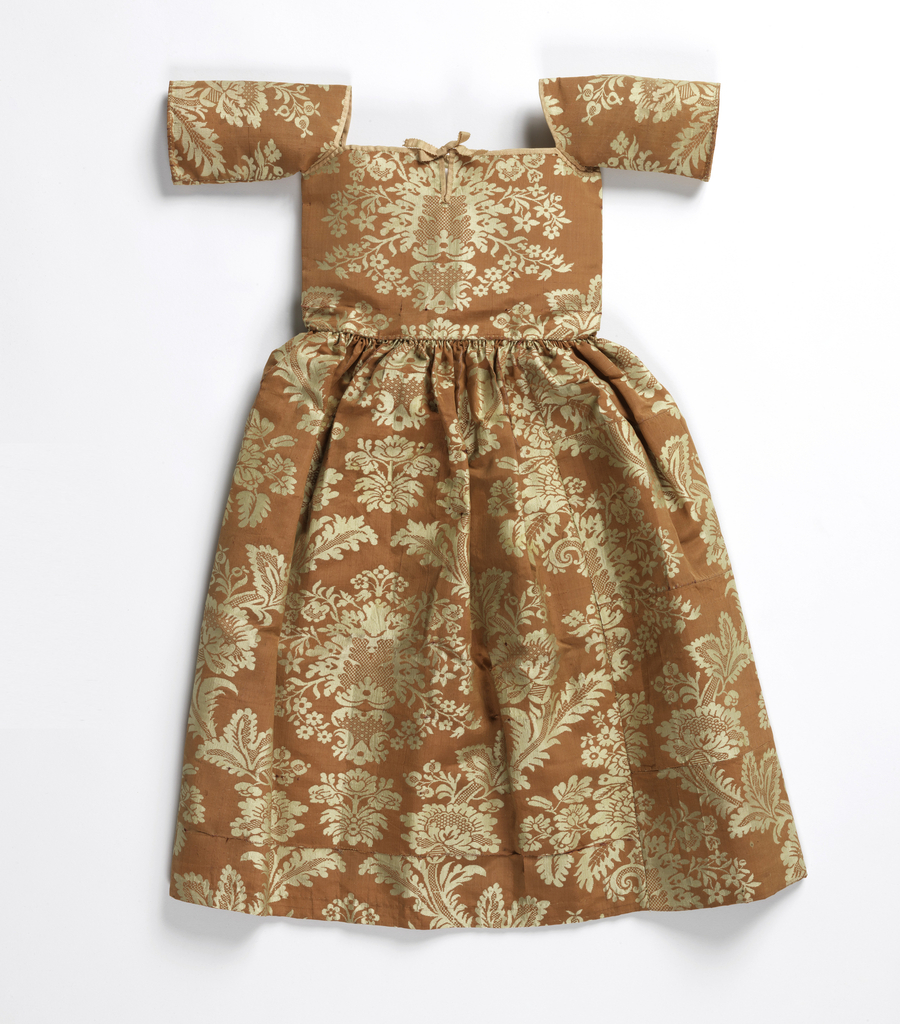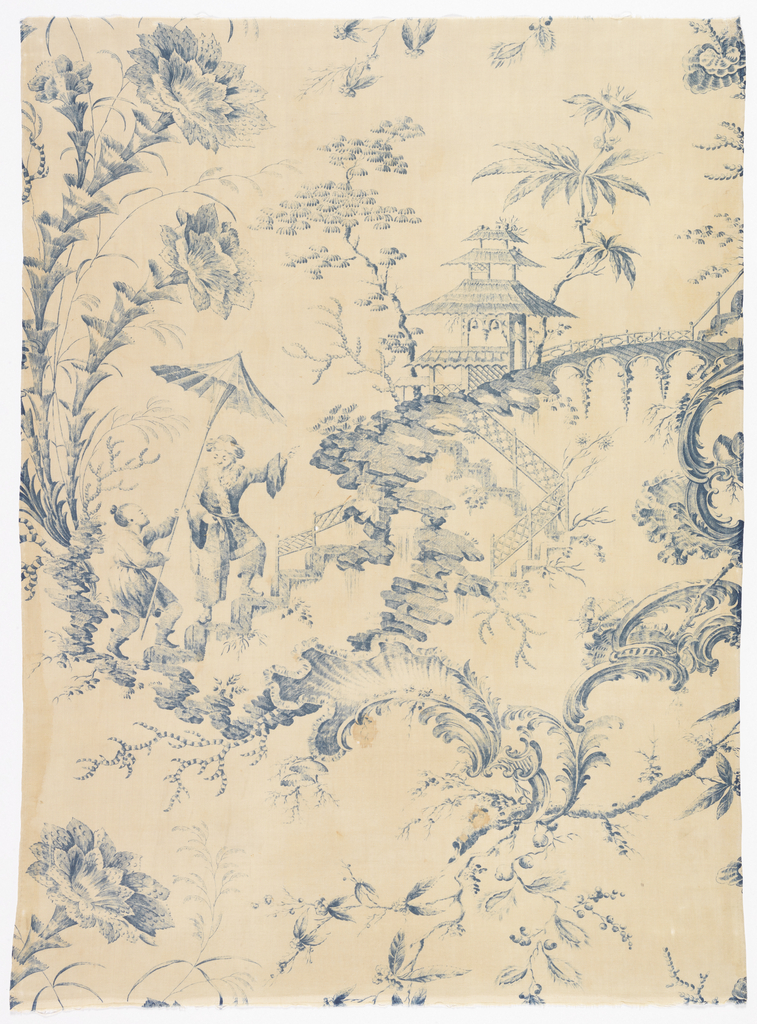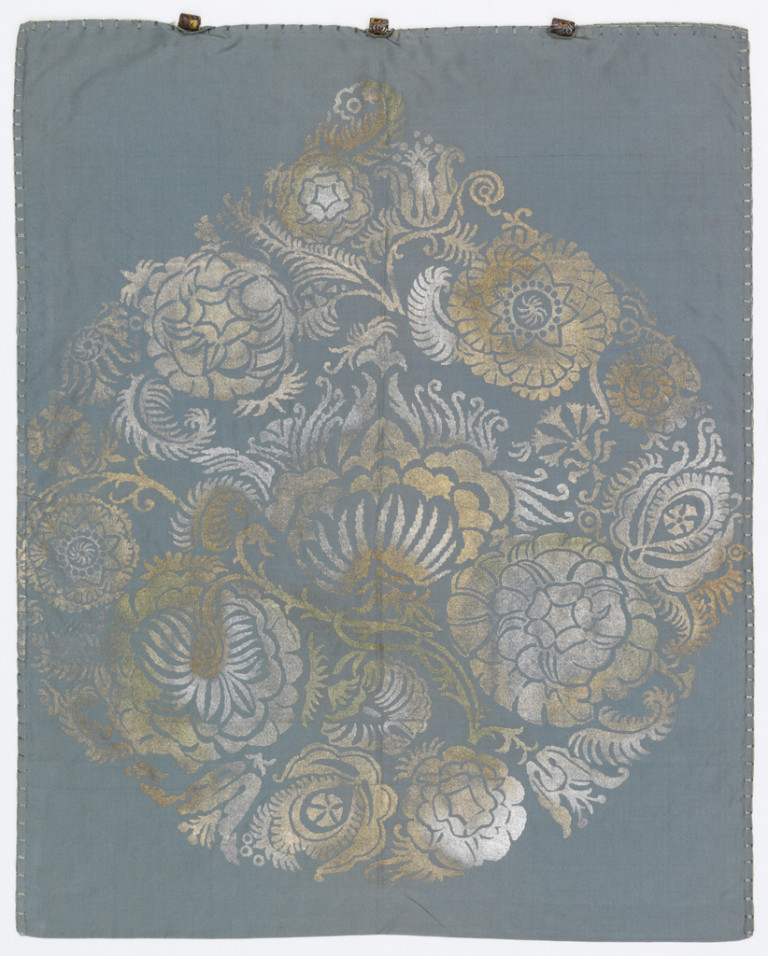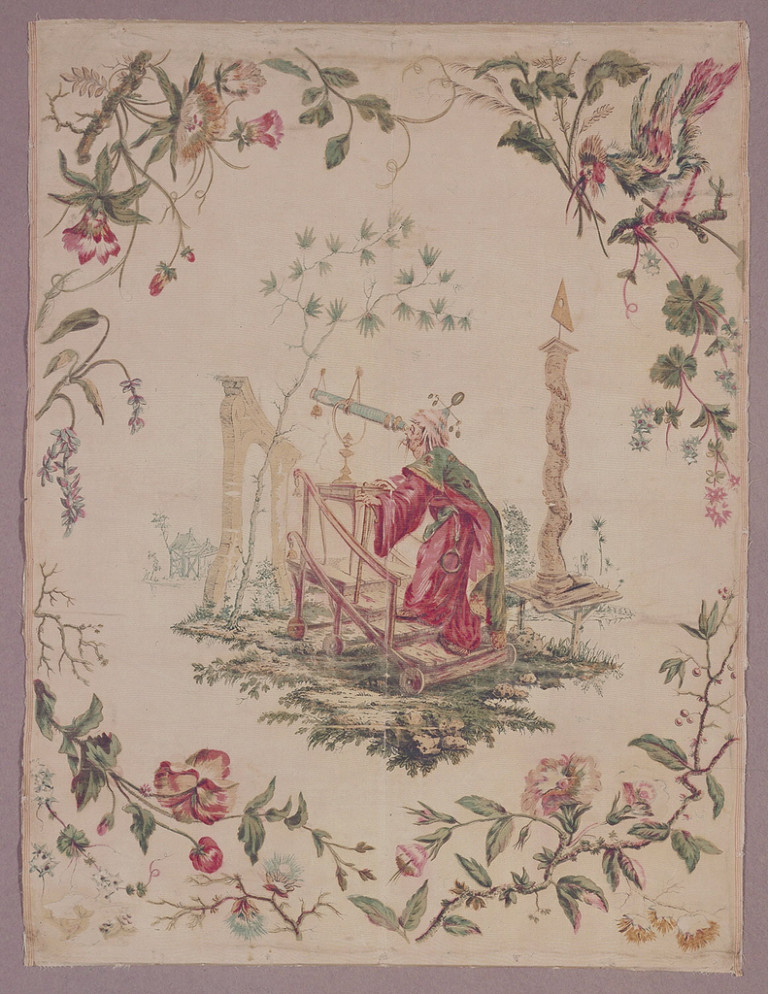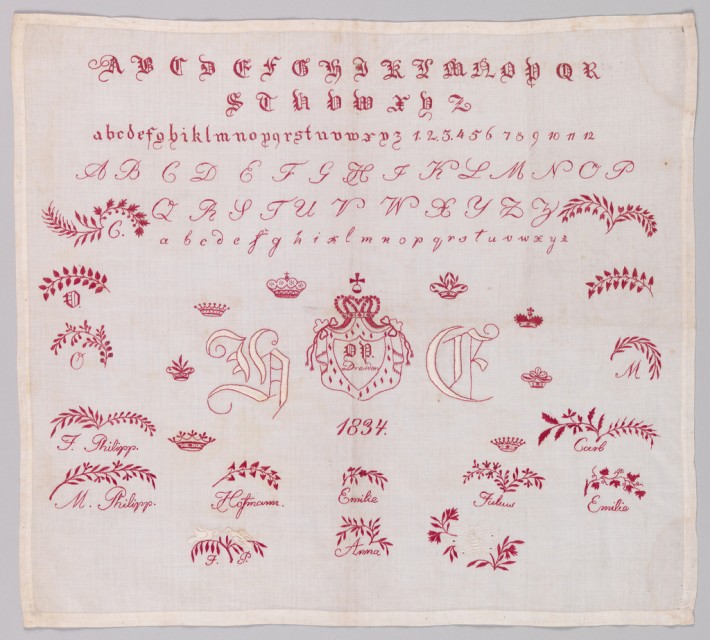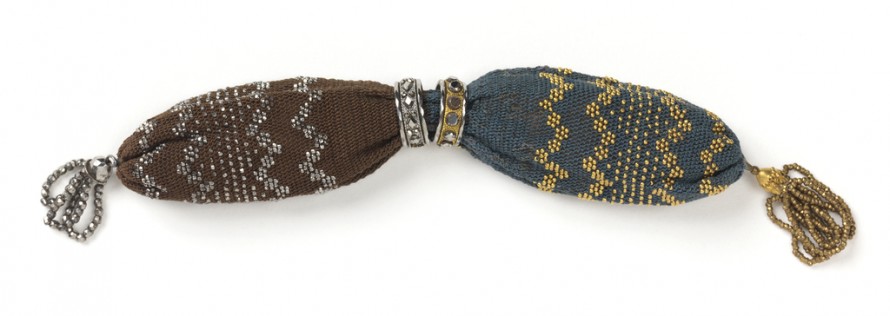Miser’s purses are oblong pouches primarily used to carry coins. The purses usually have center slit openings with pairs of sliding rings to secure coins in the purses’ ends, though sometimes clasp closures are used. The purses probably evolved from the 16th-century practice of storing coins in the toe of a stocking. Miser’s purses were...
Do you wonder why this early eighteenth-century silk dress is labeled a “child’s dress” and not a “girl’s dress”? You may be surprised to learn that both young girls and boys wore dresses at this time, a practice that actually continued into the first decades of the twentieth century. Before the sixteenth century, European men...
This textile’s whimsical chinoiserie scene was inspired by the work of French artist Jean-Baptiste Pillement (1728 – 1808), and printed by Bromley Hall, a prominent textile printing manufactory in Middlesex, England. As discussed in a previous Object of the Day post, Pillement’s fanciful illustrations inspired myriad textile designs, especially in the late-eighteenth century. Although this...
In the early twentieth century, Italian painter and textile designer Maria Monaci Gallenga achieved international fame for her extraordinary costume and textile designs. Born into a family of prominent intellectuals and educated in literature and painting, Gallenga became fascinated with the artworks of ancient, medieval and Renaissance Italy as a teenager. In the nineteen-teens, she...
Illustrated accounts of travels to the Far East served as guides for seventeenth- and eighteenth-century artists in Europe, who used these illustrations to create fanciful and imaginative chinoiserie scenes. This textile’s design is in the style of the prolific French chinoiserie artist Jean-Baptiste Pillement. Pillement’s astronomers were inspired by the travel accounts of sixteenth- and...
Samplers are embroideries that showcase needlework skills. The word “sampler” is derived from the Latin exemplar, meaning “model.” The oldest surviving samplers date from the fifteenth century, and were used by women and girls to practice stitches, alphabets, and other designs. Their motifs were worked in horizontal bands, and referenced when embroidering clothing and domestic...
Has Tax Day left you pinching your pennies? Then you may appreciate the secure storage offered by miser’s purses. These oblong purses often have small center slit openings with sliding rings to secure coins in the purses’ ends (though sometimes clasps are used). Although these purses have existed in various forms since the seventeenth-century, they...
